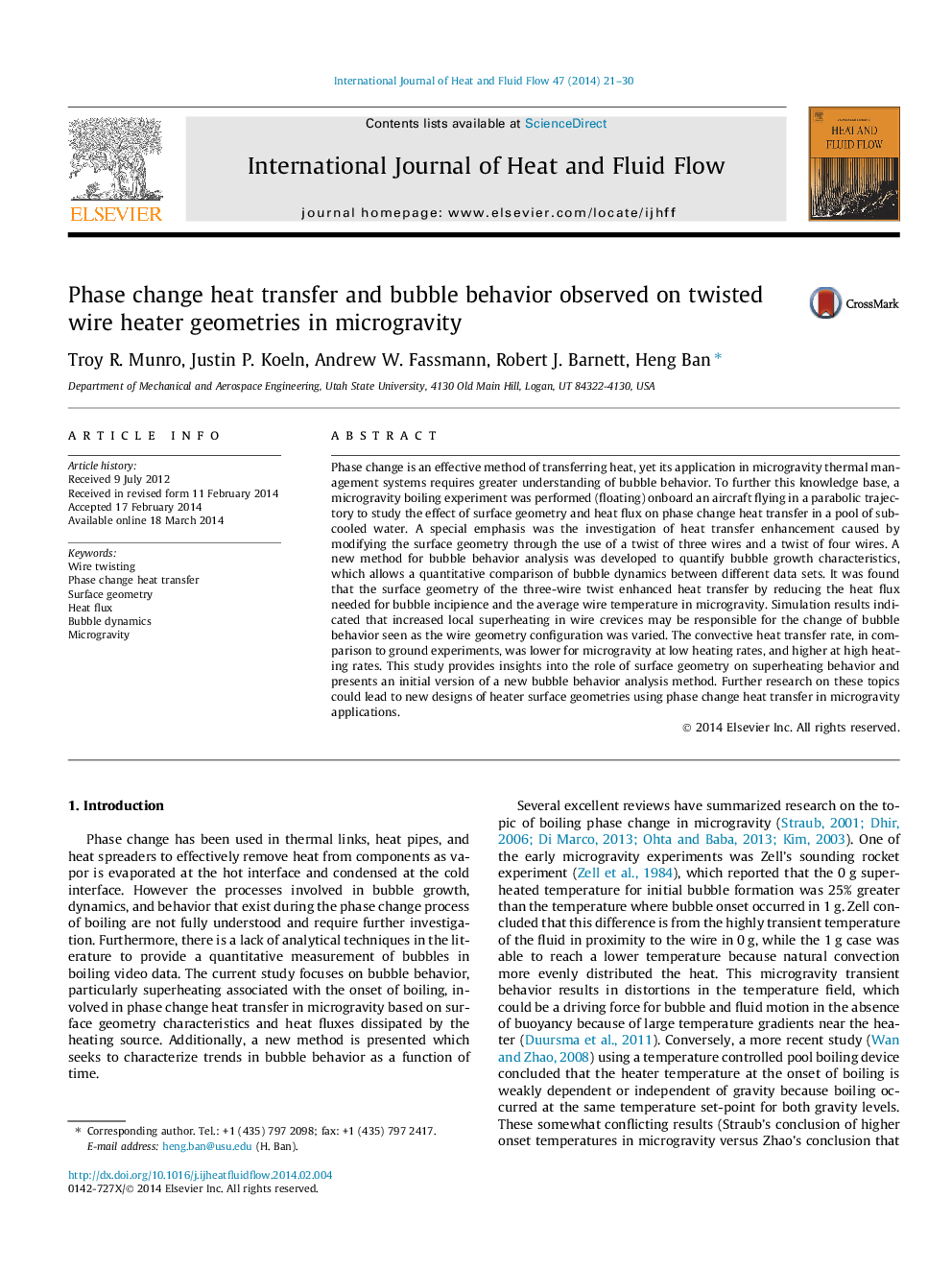| Article ID | Journal | Published Year | Pages | File Type |
|---|---|---|---|---|
| 655103 | International Journal of Heat and Fluid Flow | 2014 | 10 Pages |
•Subcooled water boiled in microgravity on twists of thin wires.•Wire twisting creates heat transfer enhancements because of high local temperatures.•A preliminary version of a new bubble dynamics method is discussed.•A critical distance that fluid must be superheated for boiling onset is presented.
Phase change is an effective method of transferring heat, yet its application in microgravity thermal management systems requires greater understanding of bubble behavior. To further this knowledge base, a microgravity boiling experiment was performed (floating) onboard an aircraft flying in a parabolic trajectory to study the effect of surface geometry and heat flux on phase change heat transfer in a pool of subcooled water. A special emphasis was the investigation of heat transfer enhancement caused by modifying the surface geometry through the use of a twist of three wires and a twist of four wires. A new method for bubble behavior analysis was developed to quantify bubble growth characteristics, which allows a quantitative comparison of bubble dynamics between different data sets. It was found that the surface geometry of the three-wire twist enhanced heat transfer by reducing the heat flux needed for bubble incipience and the average wire temperature in microgravity. Simulation results indicated that increased local superheating in wire crevices may be responsible for the change of bubble behavior seen as the wire geometry configuration was varied. The convective heat transfer rate, in comparison to ground experiments, was lower for microgravity at low heating rates, and higher at high heating rates. This study provides insights into the role of surface geometry on superheating behavior and presents an initial version of a new bubble behavior analysis method. Further research on these topics could lead to new designs of heater surface geometries using phase change heat transfer in microgravity applications.
